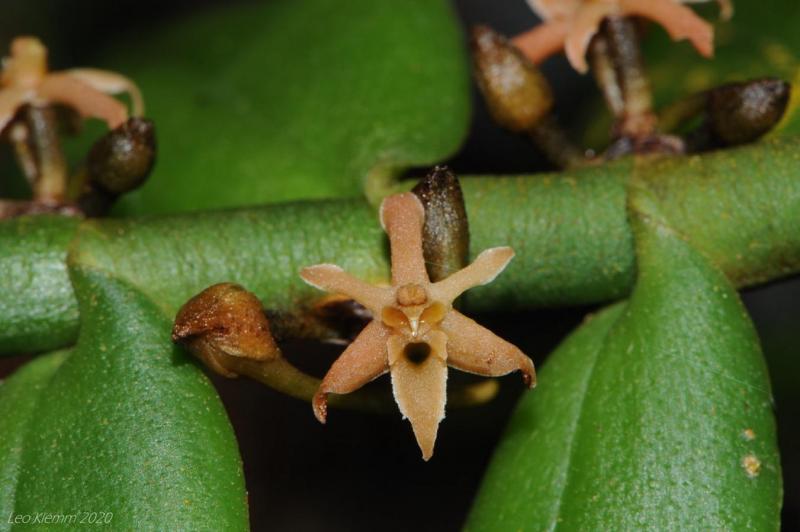Tridactyle anthomaniaca
Also known as: The Floriferous Tridactyle or Tridactyle trachyrrhiza Summerhayesia rwandensis Rhaphidorhynchus lepidotus Tridactyle anthomaniaca ssp. anthomaniaca Tridactyle lepidota Tridactyle anthomaniaca ssp. nana Angraecum lepidotum Angraecum trachyrrhizum Angraecum wittmackii Listrostachys wittmackii in the subfamily: Epidendroideae
Native to: Kenya Malawi Mozambique Nigeria Rwanda Uganda Zambia
General Information
The Floriferous Tridactyle is a medium sized monopodial cool to hot growing epiphytic orchid belonging to the sub family Epidendroideae native to Kenya, Malawi, Mozambique, Nigeria, Rwanda, Uganda, and Zambia.
Plant Description
Monopodial. Each new growth has numerous thick oblong shaped leaves
Flowers
Numerous blossoms appear during Autumn
Blooming Season
- Autumn
Care Notes
These orchids have a fine root system that can quickly die back if left dry for too long, but also does not like to be kept wet, so water regularly but ensure that the mix is dry before watering.
Climate
These orchids thrive in humid, cool, shady conditions with good airflow, they will be found under dense forest canopies where they will receive moderate sun exposure throughout the year.
When cultivated they will thrive in a cool, sheltered environment such as a shaded greenhouse, or if grown in cooler climates they can be grown in the garden in areas where they are protected from frost and receive shade throughout the year, though they may be able to tolerate some morning sun during winter.
Grows at low to high elevations.Potting
These plants are quite forgiving and will do well repotted ever 2-3 years. The mix should be coarse, well draining, and allow space for air to move and for roots to grow.
Alternatively, these plants will also do well mounted to tree fern or cork slabs, or mounted to trees.
Best time for repotting or mounting the orchids is the end of winter when new growths start to appear. Avoid repotting during hot weather,




